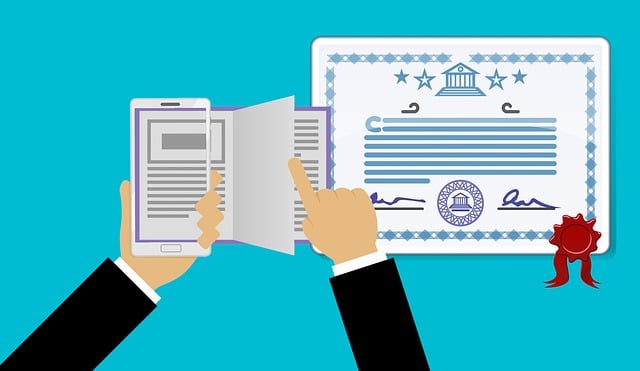Rapid Translate Team
Over the years, humans have conducted business both at home and abroad. Effective communication is essential to build trust when relocating to a new country or entering a new international market. Several language services can help achieve this. However, there is a lingering debate about interpretation vs. translation.
Interpreters and translators are the most popular services in the linguistic field. Many people use the terms interchangeably. But, there are major differences between both positions. Thus, we have written this blog post to settle the interpret vs. translate dilemma.

Table of Contents
What Is Interpretation?
Interpretation is the process of delivering spoken words from one language to another. An interpreter’s role is to listen to the words spoken in one language and accurately deliver them in another. The interpreter may deliver spoken words orally or visually using sign language.
Interpretation deals with real-time actions, making the process faster and more immediate. Interpreting allows direct cross-linguistic communication between parties speaking different languages. Professional interpreters are mostly useful in foreign affairs between countries, business meetings, and other legal and medical settings.
Interpreting is similar to translation; the only difference is that the former depends on paraphrasing. The interpreter listens to the words spoken in the source language and gets the content of the words delivered. Then, they paraphrase it to their understanding using the properties of the target language.
This means the words may vary in length, intonation, and idioms. The interpreter does their best to convey the meaning and context of the spoken words. This requires a high level of expertise in the discipline, current knowledge of both cultures and experience in interpretation.
2 Types of Interpretation
There are two main types of interpretation. Both types depend on the speed and condition of the speech delivery.
Here are the two types:
- Simultaneous interpreting: This type involves the linguists interpreting spoken words for target audiences while the speaker talks in the source language. Simultaneous interpreting requires intense concentration as the time delay is short. The interpreter must listen, convert, and deliver the words almost immediately.
- Consecutive interpreting: The linguist waits for the speaker to finish or pause before rephrasing the spoken words in the target language. Consecutive interpreting has a longer delay and often involves written notes and short-term memory.

What Is Translation?
Translation is the process of delivering written or spoken text from one language to another while preserving the meaning. According to Wikipedia, translation comes from the Latin word “Translatio,” derived from two words, “trans” and “ferre.” Where trans means “across” and ferre means “to carry.”
Unlike interpretation, translation involves writing the text in the target language to make the content understandable. A professional translator must have good linguistic and cultural skills. This involves understanding the source language and the culture of the source country.
More than this, the translator must be capable of writing well in the language. The translation process may involve using reference materials, translation memories, style guides, and glossaries for accuracy. Accuracy is essential during translation projects. Therefore, the translator uses the right tools to achieve precision.
Nonetheless, they don’t replace the human efforts of a professional translator. The translator must ensure the translated text includes the same style, tone, and format as the original. Omissions and embellishments can alter the meaning of the original text.
In addition, translators must prioritize the target language’s grammar rules, linguistic nuances, and syntax. Ultimately, the results are original and translated text that resonates with the original and target audiences. While translators may understand both languages, most of them are not bilingual.
Notwithstanding, a good translator is best positioned to translate text in their native language and area of expertise. Translation services involve various contents like websites, software, apps, and official translations.
Types of Translation
There are various types of translations. Each type depends on the requirement, field of study, and aim of translation.
Some of the main types include:
- Legal translation
- Literary translation
- Medical translation
- Technical translation
- Financial translation
- Multimedia translation, and more.
Translation is a wide profession, and several translators specialize in specific areas. Most interpreters often adjust to different fields. Thus, the debate of translation vs. interpretation has become a major topic.

What Is the Difference Between Interpretation and Translation?
The key difference between interpretation and translation depends on the situation surrounding both practices. Translators and interpreters are essential for breaking language barriers. However, several factors distinguish them. Pitching translate vs interpret will depend on understanding the differences.
1. Delivery
Interpretation happens during the conversation or message. Interpreters perform orally or visually in real-time. On the other hand, translation involves delivering the translated content in the form of the relevant document and file type. A translator transfers and writes text from one language to another for the audience’s understanding.
2. Accuracy
Translators prioritize producing accurate transitions in the target language. Many professional document translation services ensure rigorous review and certifications to verify the accuracy and quality of translated content. Meanwhile, interpreters have a short time to achieve a similar level of accuracy.
They work with what they hear to create meaningful delivery. As a result, they often exclude certain phrases and use alternative words for quick delivery.
3. Input Format
Translation projects often involve various language input formats such as scripts, speeches, instruction manuals, E-learning material, etc. These formats usually require the expertise of specialist translators. Conversely, the input format for interpretation is spoken words. However, the time frame and live setting make it challenging.
The original speaker may divert from the main subject, correct themselves, or use wrong words. The interpreter has to convey the original meaning without losing the communication between both parties.
4. Translation Direction
The translation process involves translating content from the source to the target language. This puts the translator’s focus in one direction. Interpretation requires translating speech in both directions. Thus, the interpreter must be in control of communicating in both languages.
5. Technology and Tools
Interpreters require fewer tools. Usually, they only need devices like laptops, microphones, and smartphones to communicate with their audience. However, they don’t require technology to translate speeches; they do everything themselves. Translators use various technologies to speed up the process and deliver more accurate results.
They use machine and computer-assisted translation tools with features like translation memory, automatic translation, terminology management, etc.

Settling the Interpretation vs. Translation Debate
The differences between translation and interpretation affect their appearance. However, both practices aid communication and overcome language barriers. They can help you build connections and take you to a new level internationally. Under different circumstances, everyone is a professional in their respective field.
However, it is essential to use the right service if you want your target audience to understand your mission effectively. Resolving the interpretation vs translation debate will depend on the kind of services you need to achieve your goal. Notwithstanding, you can trust Rapid Translate for high-quality translation services.
Rapid Translate understands cross-cultural communication requirements and ensures you attain the best level. Whatever your reason for building relationships in foreign countries, we’ve got you covered. So, order now to enjoy the power of seamless communication!





